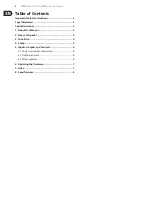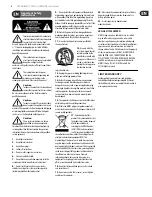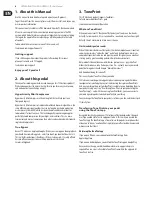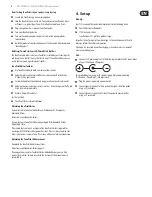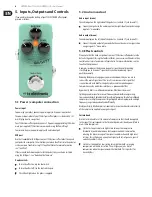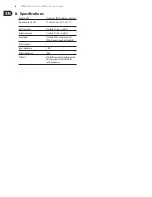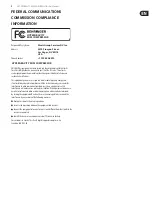
6
HYPERGRAVITY MINI COMPRESSOR User Manual
5. Inputs, Outputs and Controls
If you need to change the battery of your TC ELECTRONIC effect pedal,
proceed as follows:
5.1 Power / computer connection
Power input
To power up your pedal, connect a power supply to its power input socket.
The power input socket of your TC Electronic effect pedal is a standard 5.5 / 2.1
mm DC plug (centre = negative).
Your TC Electronic effect pedal requires a 9 V power supply providing 100 mA or
more (not supplied). TC Electronic recommends using the PowerPlug 9.
To minimize hum, use a power supply with isolated outputs.
USB port
Use the standard Mini-B USB port on your TC Electronic effect pedal to connect
your pedal to a computer. This will allow you to load TonePrints into the pedal or
create your own TonePrint using TC’s TonePrint Editor. For more information,
see “TonePrint”.
If there should be firmware updates for this pedal, they can also be installed
using the USB port – see “Updating the firmware”.
Footswitch
•
To turn the effect on, tap the footswitch.
•
To turn the effect off, tap the footswitch again.
•
The LED will light when the pedal is engaged.
5.2 Audio in and out
Audio input (mono)
The audio input on the right side of this pedal is a standard ¼
"
jack (mono/TS).
•
Connect your guitar to the audio input on the right side of your pedal using a
regular ¼
"
mono cable.
Audio output (mono)
The audio output on the left side of this pedal is a standard ¼
"
jack (mono/TS).
•
Connect the audio output of your pedal to the next device in the signal chain
using a regular ¼
"
mono cable.
5.3 Effect controls
Please note that the knob assignments on your TC Electronic effect pedal are the
default assignments. Using the TonePrint Editor, you can rewire all knobs so they
control one or several parameters of your choice. For more information, see the
TonePrint Editor manual.
A compressor reduces the dynamic range of a signal. Generally speaking,
it will help you to “even out” signal level variations by reducing signal
peaks dynamically.
Reducing the dynamic range gives you more headroom that you can use to
increase the overall signal level. The result is a more consistent signal that
is easier to work with both for the guitar player and the sound engineer.
Compression can be used either subtly or as a pronounced effect.
HyperGravity Mini is a multiband compressor. What does this mean?
Splitting an audio signal into several frequency bands before compressing
tremendously helps fight undesired “breathing”/pumping. Think of a multiband
compressor as multiple compressors targeting and processing low, mid and high
frequency ranges independently and efficiently.
Use HyperGravity Mini Compressor’s controls to shape the character and intensity
of the compression applied to your guitar signal.
Sustain knob
Use the Sustain knob to set the amount of compression that should be applied
to the signal. This corresponds to the Threshold parameter/ knob you will find in
most studio compressors.
•
Set the Sustain parameter to high values to lower the compression
threshold. A low threshold mean that compression kicks in more often,
reducing the dynamic range of the signal. In combination with high Level
settings, this will give you a consistent signal with lots of squeeze, squash
and nearly endless sustain.
•
Set the Sustain knob to a low setting for a high threshold – meaning
compression will kick in less often. This will give you just a hint of
compression when the signal exceeds the threshold. This is perfect for
clean rhythms.
Summary of Contents for HYPERGRAVITY
Page 10: ......


